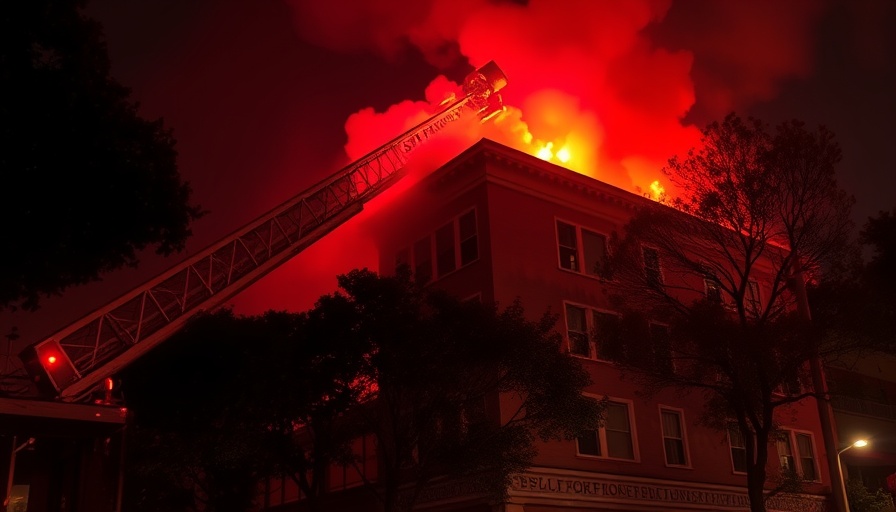
Governor’s Signature Marks a Step Towards Housing Justice
On October 10, 2025, Governor Gavin Newsom signed into law the historic Senate Bill 79, also known as the Abundant & Affordable Homes Near Transit Act. This transformative legislation aims to tackle California's dire housing crisis by facilitating the construction of affordable homes closer to public transit. By creating less restrictive zoning codes, it hopes to bolster transit systems, ease traffic congestion, and significantly reduce the state’s carbon footprint.
Senator Scott Wiener, the bill’s champion, emphasized that this legislation is a vital response to California’s affordability issues, allowing for the development of mid-rise homes within a half-mile of major transit stops. This innovative approach not only addresses the housing shortage but also encourages people to rely more on public transport, ultimately supporting the environment.
A Closer Look at the Transit-Housing Dilemma
California's housing crisis doesn't exist in isolation—it is intertwined deeply with the state's public transit system. According to a recent study, as rental prices skyrocket, transit ridership in affected neighborhoods plummets. For example, between 2012 and 2017, the Vermont Square area in Los Angeles saw a 24% drop in public transit use as median incomes rose and rents increased significantly. This pattern reveals a troubling trend: as more affluent residents replace long-time renters, they often opt for cars over transit, exacerbating traffic and environmental issues.
This resonates with residents across the Bay Area, where similar challenges arise. As housing prices continue to soar, low and moderate-income families find themselves pushed out of familiar neighborhoods served by robust transit options. The implications are dire—not just for displaced residents but also for the overall effectiveness of transit systems that rely on a diverse ridership.
Implementing SB 79: Opportunities and Challenges
While SB 79 represents a monumental policy shift, its success hinges on community engagement and support. The upcoming ballot measure in November 2026 is essential for funding Bay Area transit, and now is the time to rally support. Grassroots campaigns and local organizations can play a pivotal role in mobilizing voters and advocating for urban density that prioritizes affordable housing.
Moreover, the legislation aims to implement local flexibility and establishes standards to safeguard against gentrification impacts, emphasizing that future housing developments should benefit existing low-income residents. Advocates argue that intentional planning can mitigate displacement risks if done thoughtfully.
Historical Context and Background: The Evolution of Transit-Oriented Development
Historically, California's urban planning has often prioritized highway expansion over public transit development. However, the last few years have seen a progressive shift in mindset. The rise of environmental consciousness and an acknowledgment of the housing crisis has pushed legislators like Wiener to promote policies that align housing initiatives with transit accessibility.
By observing success stories from cities across the globe, such as Tokyo and Hong Kong, California is now adopting smarter approaches to land use that reflect a growing consensus on sustainability and community resilience.
Connecting the Dots: Community Roots and Localism
As a resident of the Bay Area, it’s crucial to recognize the unique character and community bonds that define our neighborhoods. Engaging in community-led initiatives, attending workshops, and participating in local organizations not only strengthens communal ties but also fosters a culture of advocacy for residents' rights within the urban landscape.
The upcoming public transit campaign sets the foundation for sustainable neighborhoods, underscoring the importance of each resident’s voice in shaping policies that directly affect their daily lives.
Taking Action: Your Role in Building a More Equitable Future
Participating in community discussions, joining local advocacy groups, and supporting initiatives that align with sustainable transit development empower residents to influence the future of their neighborhoods. Whether it’s attending a town hall meeting, signing a petition, or simply spreading the word about these pressing issues, each action contributes to a collective endeavor.
As Bay Area residents, embracing the transformational potential of SB 79 requires not only awareness but also a commitment to advocacy. Together, we can build a future where affordable housing and efficient public transit coexist and thrive.
In conclusion, the passage of SB 79 is a promising step toward a broader vision of equitable urban development, but its implementation will depend largely on community involvement and voter engagement. Let’s unite to ensure that this legislative win translates into real-world benefits for all residents.
 Add Row
Add Row  Add
Add 



Write A Comment